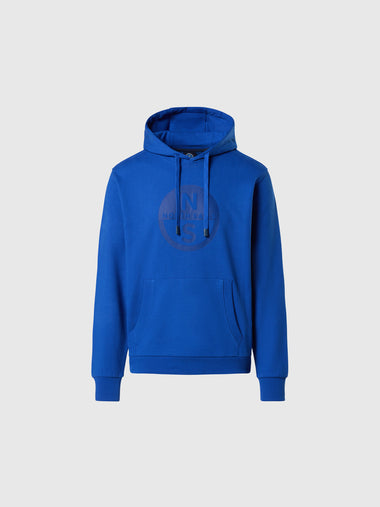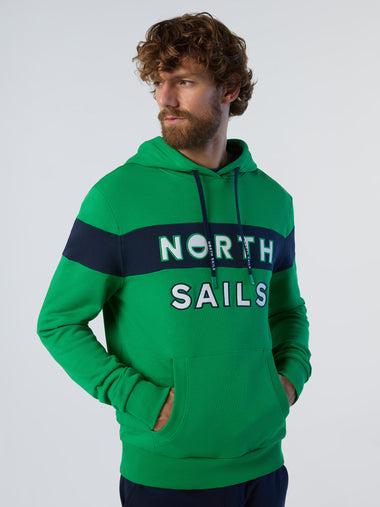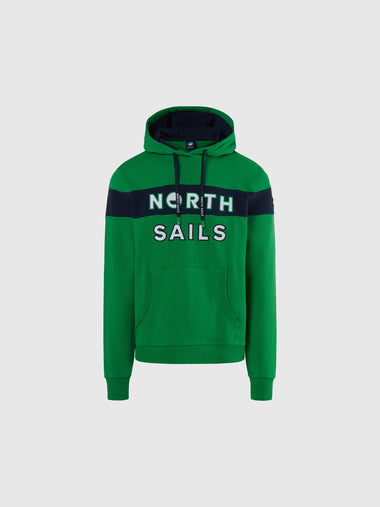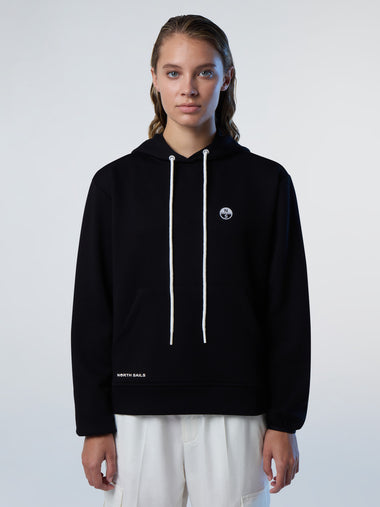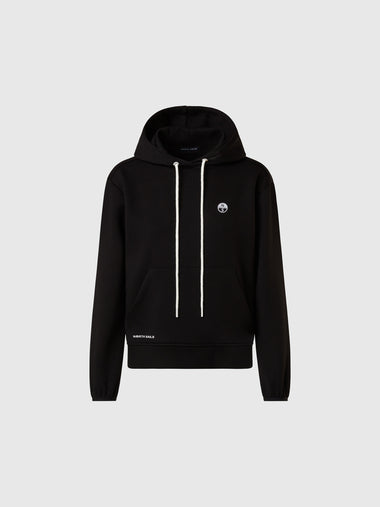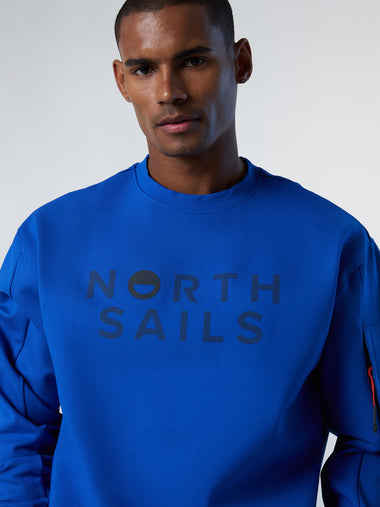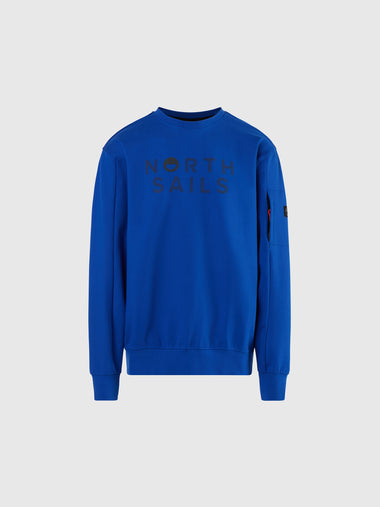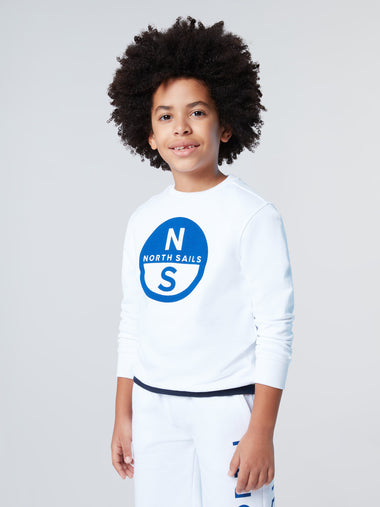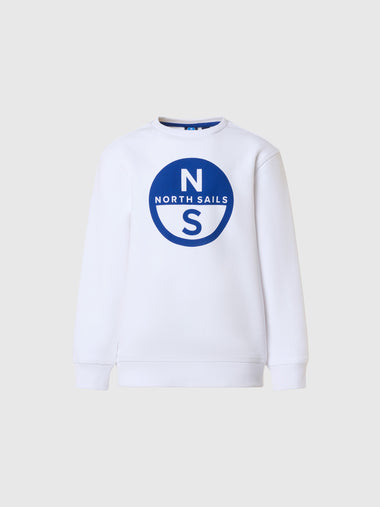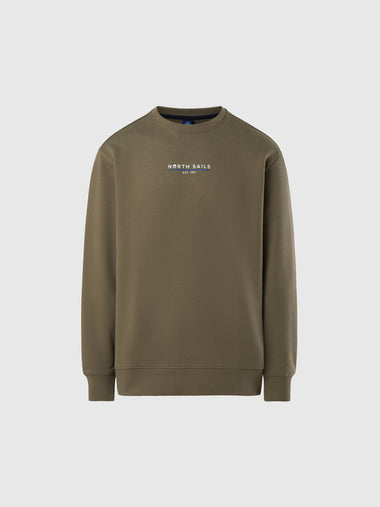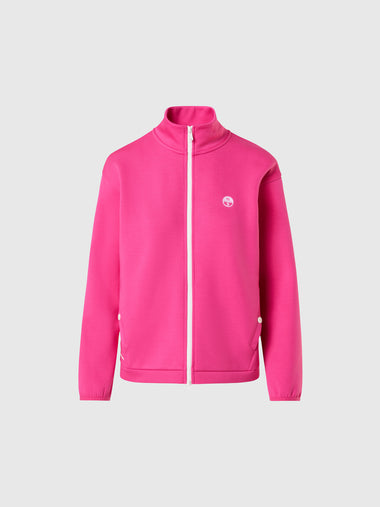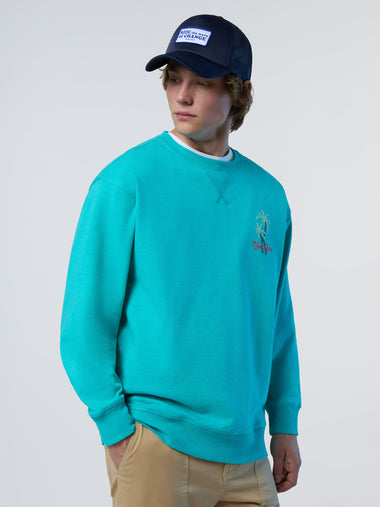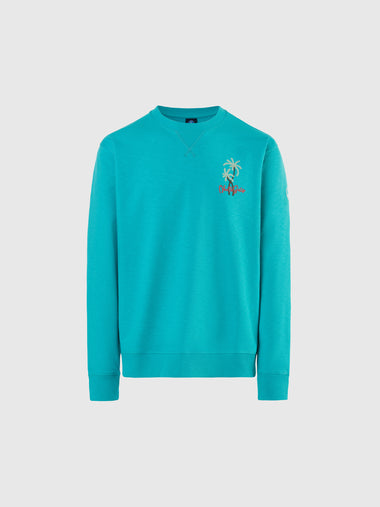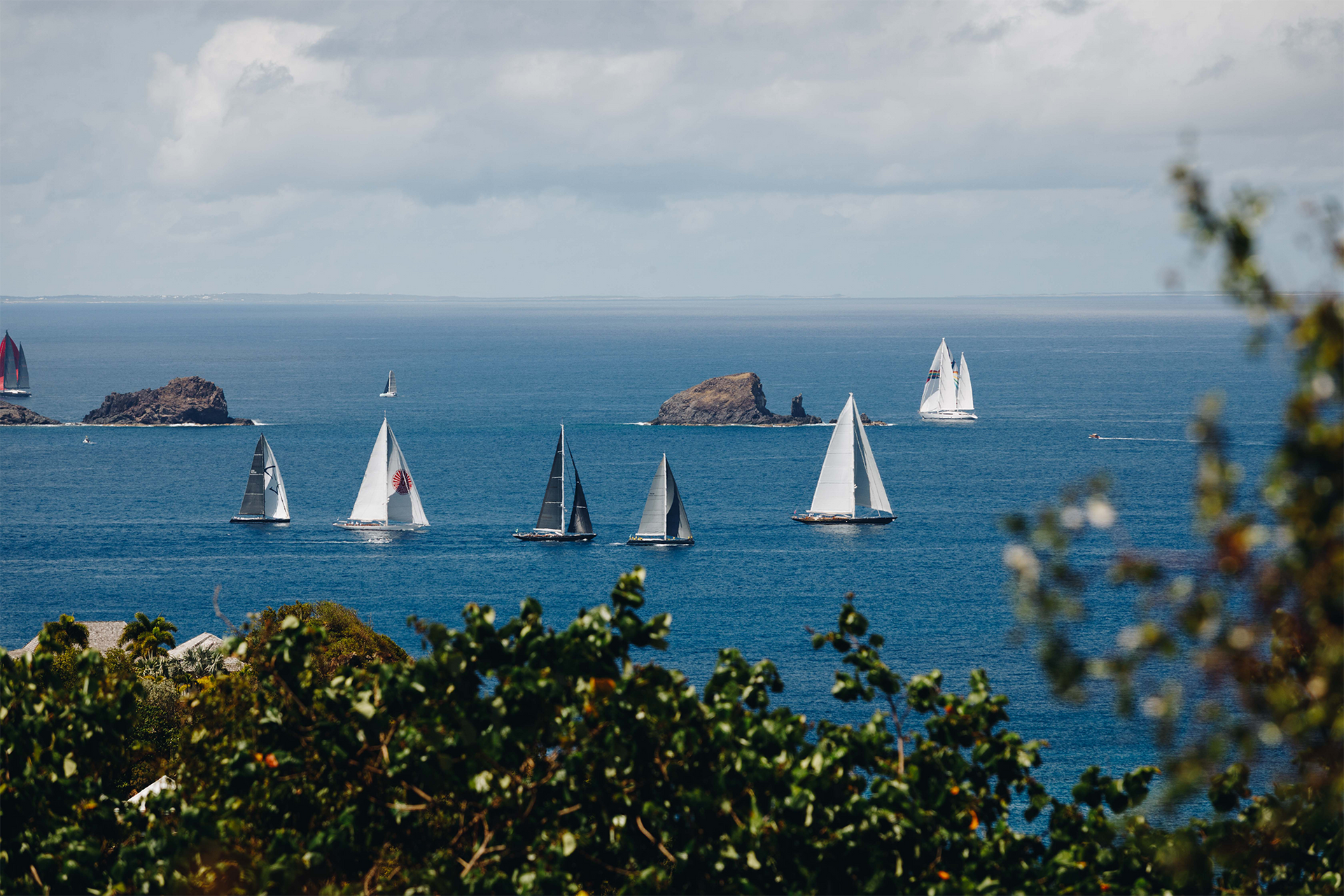LET'S TALK T-10 (TARTAN) SAIL TECHNOLOGY
LET’S TALK T-10 WEBINAR
A recap of our informative webinar with T-10 class experts Nick Turney, Perry Lewis and sail designer Mike Marshall. Allan Terhune moderates as we discuss the updates to the new tuning guide, visual rig tuning, one jib vs. two jib combos, as well as sailcloth technology and differences between 2D string sails, paneled sails, and 3Di Composite Technology.
This article will discuss the new Quick Tune Guide and how to effectively use it to optimize your boat’s performance.
What We Learned – Visual Tuning and Quick Tune Guide
Tuning the T-10 can be very simple; however, it can be rather difficult to get that little bit of extra performance out of the boat. In the webinar, Nick and Perry discuss the visual cues they use to set the T-10 up for optimized performance in varying conditions. The North Sails T-10 experts combined their knowledge and expertise to put together a quick and easy guide for rig tune and boat set up.
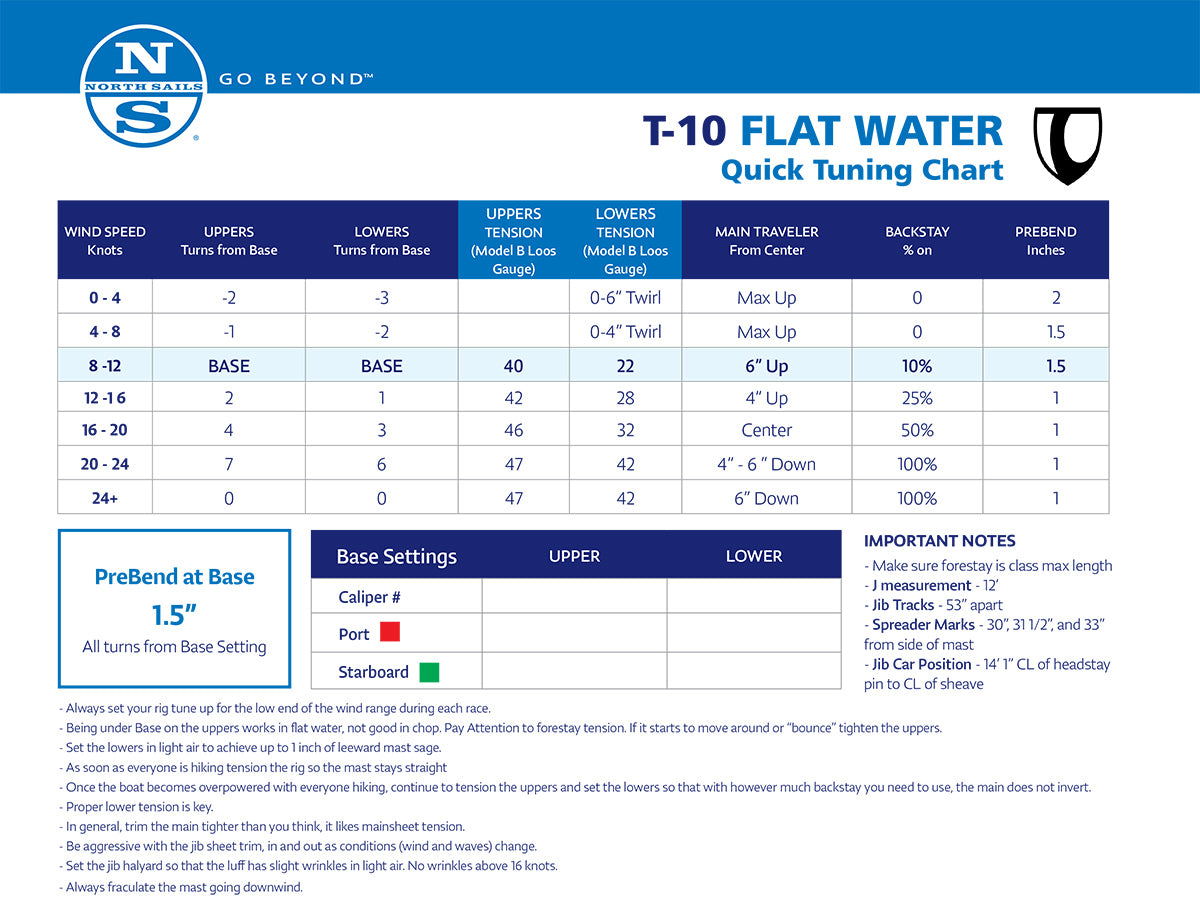 |
 |
DOWNLOAD QUICK TUNING CHARTS (PDF)
The new Quick Tune Guide was developed to simplify your Rig Tune steps while on the water. The T-10 requires a slightly different set up in flat water vs. sailing in chop or waves. Use the appropriate chart for the conditions you are experiencing that day. A tighter rig (tighter headstay) is beneficial in flatter water as it allows you to trim the sails tighter and gives you that few extra degrees of point. In a choppy sea state, you want to maintain some sail depth, so a looser rig (more headstay sag) is recommended.
How do you determine if you are sailing in flat water conditions or chop conditions?
The T-10 always seems like the boat is starved for power, and when you add in a choppy sea state to the mix, maintaining a good target speed can be rather difficult. The best way to determine if you need to set the rig up with more power is to pay close attention to your speed. If you are struggling to maintain a higher average speed, or if it seems like you are struggling to accelerate use the looser rig tune settings (Chop).
Are the numbers for turns from base or additional turns from the number of turns in the box immediately above or below?
Great question, to properly read the Quick Tune Guide each wind speed setting requires a different rig tension. To go from one wind speed setting to the next you need to adjust your shrouds. The number of turns to get from one setting to the next is always read from BASE. Example: To get from BASE to 16-20 you would add 3 full turns to your uppers and 2 full turns to your lowers. To go from 16-20 down to 12-16 you would loosen the uppers 2 full turns and loosen the lowers 1.5 full turns.
Keep in mind that these recommended number of turns can vary from boat to boat, as some rigs can be softer than others which would require more turns to achieve the same tensions. It is important to use our Visual Tuning method to ensure you have the proper amount of rig tension for the conditions. Keep track of your number of turns and modify this Quick Tune according to your mast.
You mention 50% backstay when going to weather. Are the tuning numbers referenced with 50% backstay on, or backstay slack?
To properly get your boat set up for BASE tune, you should get your rig tensioned to 40 on the uppers and 22 on the lowers with zero backstay on. I usually go thru this process with the backstay 100% disconnected and the boom off. When you are on the water sailing however, it is important to properly set the rig tension up for the conditions. When you are sailing in wind speeds above BASE, it is important to have the ability to ease the backstay in the puffs to generate more power in the rig and sail plan, but also have backstay available to de-power the rig and sail plan without inverting the mainsail. I set the backstay tension to 50% and look at my leeward shrouds, if they are loose, I will go to the next rig tune setting and increase my rig tension.
In the Quick Tune guide mentions marks on the spreaders; what conditions require the changing from one mark to the other?
The markings on the spreaders gives the trimmer and helmsman a reference point for trimming or a way of communicating settings and repeating trim settings tack to tack. If you need to accelerate or you are sailing in choppy conditions, the jib will need to be eased to help the boat maintain a good target speed, so the marking closer to the spreader tip would be a good trim setting. If you wanted to point higher, trimming the jib into the inside mark would be a good trim setting.
We are extremely excited to announce our 3Di Jib program for 2021. We have two different designs to accommodate the full range of wind speed and sea state. Our APi-1 Jib is designed to be utilized throughout the entire wind range and is the perfect sail for those teams that prefer to have one jib in their upwind inventory or the teams that experience flatter water conditions at their sailing venue. The Li-1 Jib is designed fuller in the lower section of the sail, making this a great sail for choppy venues, or lighter air conditions if you are running a two-jib program.
If both the Li-1 and APi-1 jibs are same material, there is no risk of damaging the Li-1 if you must stick with it if the breeze comes up, right?
Both the Li-1 and APi-1 jibs are built out of 3Di RAW 360 Black aramid. 3Di composite technology is by far the strongest and most durable option in sail technology. The Li-1 Jib is a fuller sail compared to the APi-1 Jib, but it is also close to the same DPI as the APi-1 which allows either sail to be used in windy conditions. If you are sailing in conditions that require more power in your sail plan, a deeper/fuller jib is recommended, if you are sailing in flatter water conditions or windy conditions a flatter jib may be better, however either sail is strong enough to handle the upper wind range of the T-10.
One photo in the webinar shows a telltale on the leech of the jib near the spreader end. How is this used?
Great question. We place a tell tale on the leech of the jib just under the top batten. This is an important reference tool for trimming headsails. This tell tale will tell us if the jib is over trimmed. In flat water conditions, when you can trim the sails fairly hard, you would want to find the point of sheet tension where that tell tale will stall, then ease the sail out slightly so it is flying 100%. This is your maximum trim setting. If that top tell tale is stalling at all, the jib is over trimmed, and you find it rather difficult to maintain a target speed or accelerate.
Thank you viewing our T-10 webinar. Please contact any of our T-10 class experts if you would like to learn more about our new tuning guide, our new sails for 2021, or if have any further questions about sailing the T-10.





